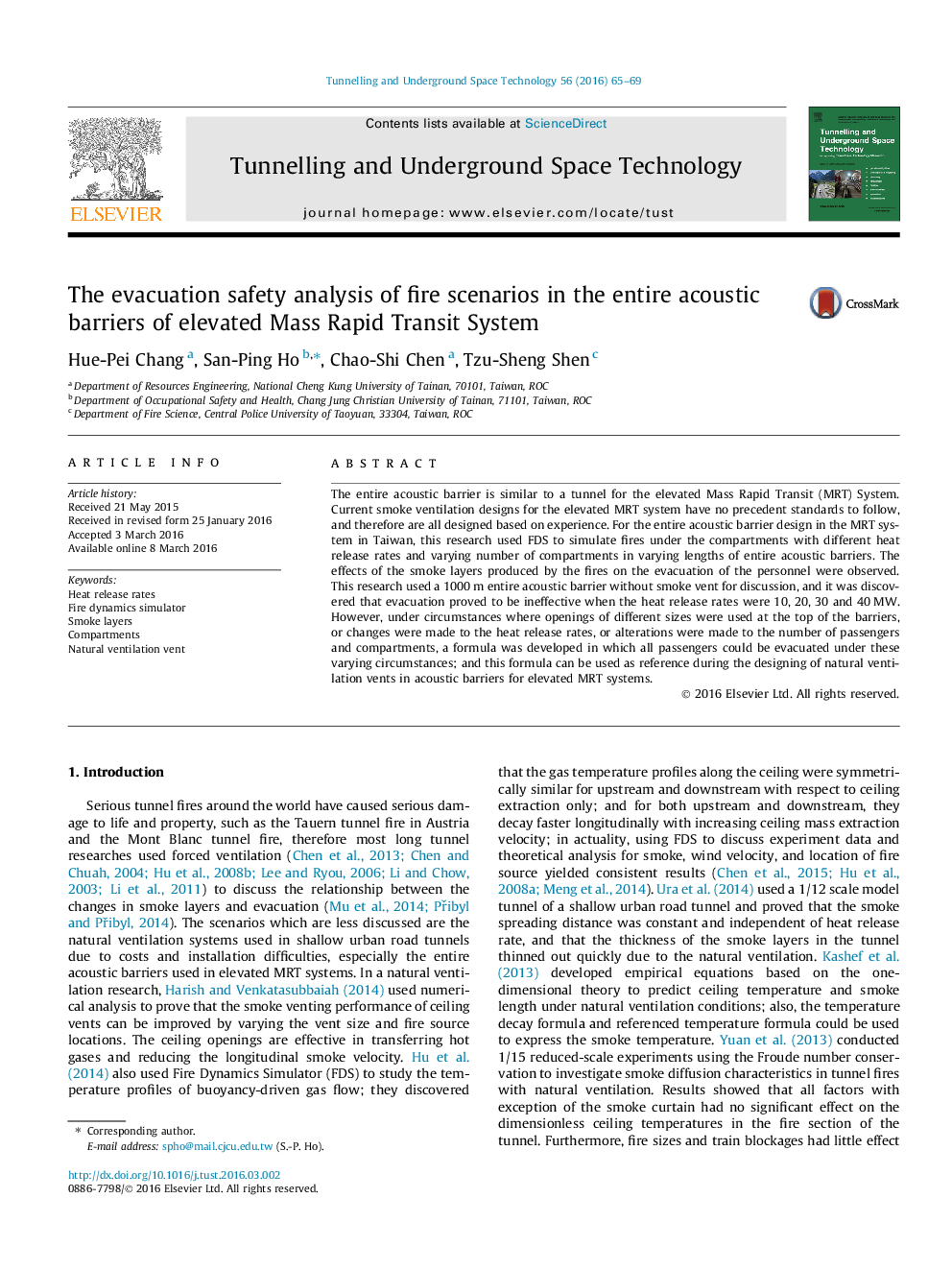| Article ID | Journal | Published Year | Pages | File Type |
|---|---|---|---|---|
| 312045 | Tunnelling and Underground Space Technology | 2016 | 5 Pages |
•The smoke ventilation design is provided for elevated Mass Rapid Transit System.•FDS simulates fires under the different compartments and heat release rates.•An entire acoustic barrier without a vent could not provide effective evacuation.•A correlation is developed to predict the vent width of the entire acoustic barriers.
The entire acoustic barrier is similar to a tunnel for the elevated Mass Rapid Transit (MRT) System. Current smoke ventilation designs for the elevated MRT system have no precedent standards to follow, and therefore are all designed based on experience. For the entire acoustic barrier design in the MRT system in Taiwan, this research used FDS to simulate fires under the compartments with different heat release rates and varying number of compartments in varying lengths of entire acoustic barriers. The effects of the smoke layers produced by the fires on the evacuation of the personnel were observed. This research used a 1000 m entire acoustic barrier without smoke vent for discussion, and it was discovered that evacuation proved to be ineffective when the heat release rates were 10, 20, 30 and 40 MW. However, under circumstances where openings of different sizes were used at the top of the barriers, or changes were made to the heat release rates, or alterations were made to the number of passengers and compartments, a formula was developed in which all passengers could be evacuated under these varying circumstances; and this formula can be used as reference during the designing of natural ventilation vents in acoustic barriers for elevated MRT systems.
